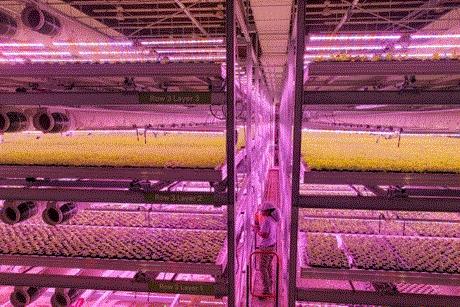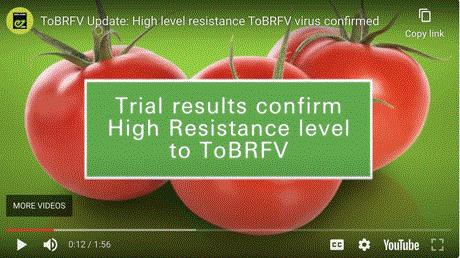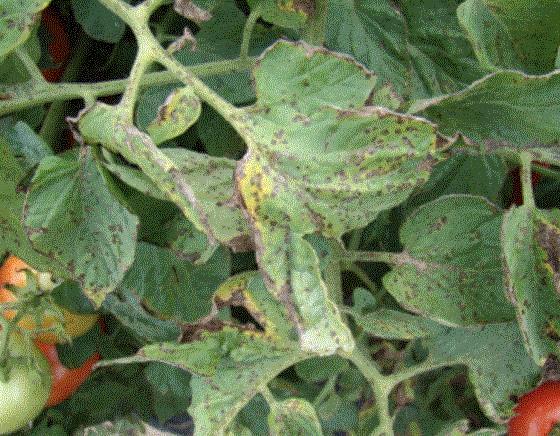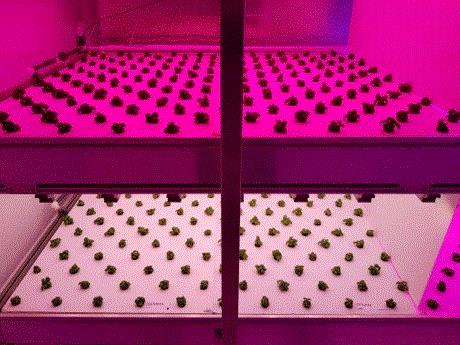Soli Organic Has Its Sights on Vertical
After Indoor Ag-Con at the end of February, I had the chance to Zoom with Soli Organic CEO Matt Ryan. He was on one of the keynote panels at the show, where he talked about Soli’s push toward indoor vertical farms with a twist: they’re growing in soil.
He gave me the rundown of where they started—first field-grown, then greenhouses and now they're moving into large-scale, multi-level vertical farms. That includes an indoor facility in Harrisonburg, Virginia, then a much larger one in Elkwood, Virginia.
But the real plan and the future model? It’s what Matt calls "the giga-sized location" of 100,000-plus sq. ft. in Anderson, South Carolina, that spans six levels of growing space. There are two more large-scale facilities under construction in Marysville, Washington, and Brooks, Texas, both with attached packhouses.

Soli will still grow the living herbs in pots in the existing greenhouse facilities, but the culinary cut herbs, leafy greens and spinach (coming soon) will be grown in these vertical farms. Here’s a snippet of my conversation with him. You can read more in the May issue of Inside Grower:
Jen Polanz: What are the main goals for Soli over the next five years or so?
Matt Ryan: I would start with the No. 1 goal is to be the most cost-efficient grower of quality organic produce on planet Earth.
JP: That’s a big, big statement.
MR: You bet it is and we’re doing it.
JP: Tell me about that—how are you able to do that, and are you doing it right now or is that what you’re working toward?
MR: Right now. In fact, the reason why we’re able to get the funding we’re doing and the interest that’s coming our way—and, frankly, the distribution that’s growing—is because we are doing it.
Let me give you an example: I think I mentioned this when I talked [at Indoor Ag-Con], the 2-oz. basil you see in the Northeast, which prices out on shelves at $3.49 to $3.99 depending on the retailer, is coming out of our Elkwood facility. Our Elkwood facility is one of these large-scale facilities I just mentioned to you. It’s great quality organic basil, and it is growing in our Elkwood facility and we’re getting a margin on that product that makes us profitable at Elkwood. So we are actually delivering a lower price point for organic. Now keep in mind all the CEA players out there are basically charging the same amount for their produce in the Northeast, for their basil, and they’re only putting a 1.25-oz package out.
JP: What does that organic add for the consumer? Do you see more demand and a growing demand for the organic products?
MR: The long-term trends for organic are, even with the horrible price premium, way above the rest of the market. The interesting thing is in any kind of market research you do, the barrier that people have from buying more organic—and by the way most consumers buy some organic at this point in time, so organic is absolutely a mainstream thing, it’s not a fringe—most consumers would buy more organic if it weren’t so costly. So we think we’re solving an unmet need in the marketplace by bringing down the price of organic produce.
Stay tuned for the rest of the story!

Enza Zaden Launches New Label for ToBRFV-resistant Tomatoes
HREZ High Resistance by Enza Zaden is the new label designed to set apart the company’s exclusive collection of tomato genetics resistant to Tomato Brown Rugose Fruit Virus (ToBRFV).
ToBRFV has been pretty devastating to just about every indoor tomato grower out there, wiping out whole ranges of crops and making its mark in 31 countries. These genetics can help play a role in preventing further outbreaks. The company touts the resistance, but says strict cleaning protocols should continue along with use of the new tomato varieties to achieve greater success.
“Enza Zaden is running parallel tests in different countries with HREZ varieties to ToBRFV. The trials in Europe and North America show that Enza Zaden has qualitatively good tomato cultivars with a confirmed High Resistance level,” according to the company’s website.

To launch the new label, Enza Zaden sent out a newsletter (and if you got one, you may have gotten over 100 accidentally, like I did). You can sign up for the newsletter to receive more details as more releases happen, and you can visit the Enza Zaden website to read more about what’s available now and see sanitation protocol recommendations.

IUNU’s State of CEA Survey
Where is CEA and where is it heading? The answer to that is very different than in 2016, when IUNU released its first industry report on CEA, which then was titled "The State of Indoor Farming" and managed by Artemis, which IUNU acquired in 2021.
IUNU is asking again where are the emerging trends and where is CEA going in this year’s State of CEA Survey, which you can weigh in on HERE. And this year, it’s being expanded to include multiple aspects of CEA, including greenhouse fruit and vegetables, as well as ornamental production.
Also, IUNU is partnering with the University of California Agriculture and Natural Resources (UC ANR) to release the report. UC ANR’s VINE agrifood technology innovation program, Global Controlled Environment Agriculture Consortium (GCEAC) and UC Davis-led AI Institute for Next Generation Food Systems (AIFS) will collaborate on the report as well.
When you take it, you might want to block off a bit of time—it’s expected to take between 20 and 30 minutes. All types of CEA operators from high tunnel to greenhouse and indoor farms are invited to participate. All data collected is confidential and shared via anonymous trends, according to the company. No identifying information is shared.

Video: Combatting Tomato Bacterial Leaf Spot
My colleague and fellow music-lover Bill Calkins just shared this tip for controlling Tomato Bacterial Leaf Spot in his Tech on Demand newsletter, and I wanted to include it here in case you missed it:
If you’re growing tomato transplants for home gardeners, your team needs to be aware of one inherent risk to the crop: bacterial leaf spot (BLS). BLS is known to impact production if protocols aren’t followed to minimize the risk.

In this SHORT VIDEO, our Tech On Demand jack-of-all-trades Nick Flax (you may know him from such things as the tech tip you see every week in the Tech on Demand newsletter) covers environmental, cultural and chemical controls for BLS. He shares the greenhouse temps that can encourage infection, the importance of buying seed from reputable sources and minimizing stress to the plants. In terms of chemical applications, Nick runs through both biological and conventional products you can turn to for control.
Avoiding White Light in Basil Production
The vendor companies in this industry do a nice job of conducting research related to their products that helps growers out and Signify is no exception. This time, the LED lighting company has researched the impact of white light on indoor basil production.
As with other crops in the past, like lettuce, tomato and spinach, the research found the use of white light does not add value to the crop, but does increase energy consumption.

The conclusion was made after testing with light recipes using the Philips GreenPower LED production module dynamic in a climate chamber where three basil crops were grown under different light recipes.
According to Signify’s blog post about the research, there’s been discussion of the use of white light in LEDs because it’s easier for workers to work under white light and they can assess the crops better. However, the white light doesn’t improve yield and increases costs.
“So is there no role at all for white light in LED crop lighting installations,” the blog questions. “Yes, there is, but only when people have to work in the crop and there is no or too little natural daylight available. To be able to work comfortably in a greenhouse, about 5% white light is sufficient.”
Read the full blog post HERE.

From Food Safety to Growing in Space & More: OSU’s Upcoming Events
I’ve received a couple notices of events happening at different locations around Ohio to pass along.
The first event is the SAFER Controlled Environment Agriculture Conference April 13-14 at the new Controlled Environment Agriculture Research Complex at The Ohio State University. SAFER stands for Strategizing to Advance Future Extension and Research, and the conference will address past and ongoing food safety projects, as well as extension and research priorities. If you’d like to go to this, it’s an in-person event and the deadline for registration is March 28, so don’t delay!
Next up is the Workshop on Advancing Controlled Environment Agriculture on Land and In Space in the Next 20 Years. This event will take place June 27 – 29 on the campus of University of Toledo in Ohio. It’s a joint workshop hosted by University of Toledo with USDA Agricultural Research Service (USDA ARS), the Department of Energy (DOE) and NASA. Topics include emerging technologies in sensing, automation, AI/ML and control; water efficiency and management; plant breeding and adaptations to controlled environments; and more.
And last, but definitely not least, registration is now open for the OHCEAC’s 2023 Conference on July 19, the Wednesday after Cultivate’23 ends. This year’s conference is Advancement of Sustainable Controlled Environment Crop Production Sciences and Technologies, and like last year, you can either attend in person or online via Zoom.
Click the links to find out more of the details about speakers, tours if offered and registration information.

Daily Dose of Cute
A little levity for a Monday. This is what we encountered walking into the panda indoor exhibit last week during our visit to the National Zoo while on vacation in Washington, D.C. I have definitely had days like this.

As always, feel free to email me at jpolanz@ballpublishing.com with comments, questions, news and views.
Until next time,

Jennifer Polanz
Editor-at-Large
Inside Grower
This email received by 29,588 loyal readers!
Interested in advertising in Inside Grower? Contact Paul Black or Kim Brown and they'll show you how easy, effective and affordable it is.